Raised garden bed designs are necessary to construct a raised garden bed, which is one of the most functional pieces of patio furniture available.
From easy-to-understand ideas for beginners to intricate designs that require a great deal of knowledge and provide a little more difficulty, this extensive compilation of garden thoughts and blueprints has something for everyone.
I’ve put together a list of fifty various plans for you to choose from, arranged by size for convenience!
1. Tiered Corner Garden
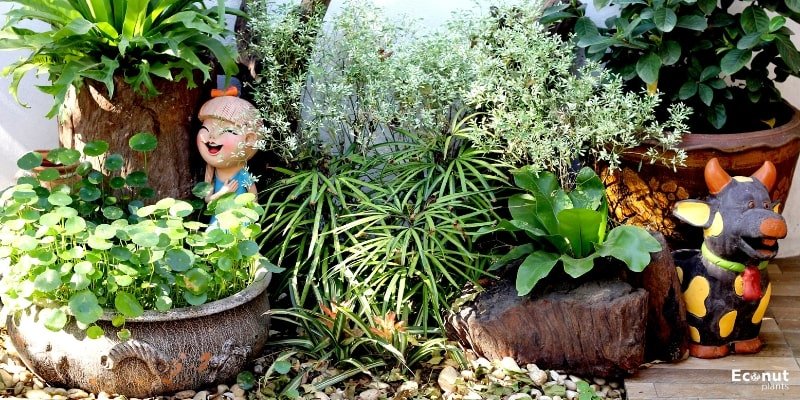
Materials: Wood
Dimensions: 3’ x 3’ x 2.5’
Difficulty: Medium-Hard
Michelle adores deer and their adorable looks, but not when they trample over all of her yard’s vegetation, including her herbs and vegetables! She has chosen to cultivate herbs where the deer cannot access them on their terrace as a remedy.
This elevated garden bed with tiers made by hand is ideal for Michelle’s idea. It can squeeze into even the smallest of areas because of its tiny footprint. Further accommodating a greater range of plants are the tiers.
2. Two-Tiered Raised Bed
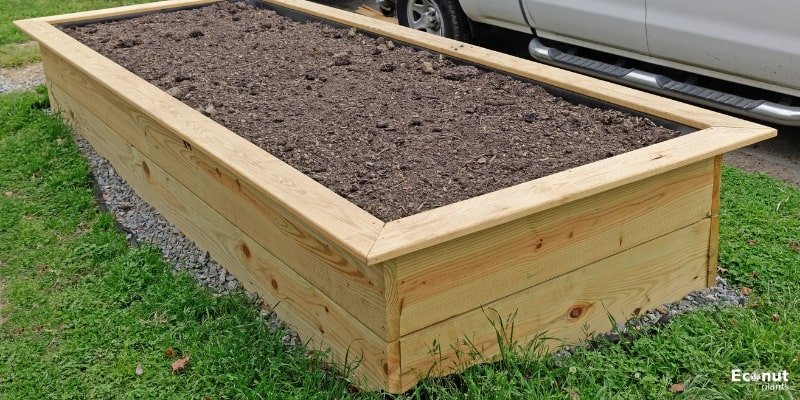
Materials: Wood
Dimensions: 3’9” x 3’9” x 8”
Difficulty: Medium
Scott adores constructing flowerbeds. However, he has a pet peeve: the corner space is frequently underutilized. Thus, he constructed this two-tiered raised garden bed style that makes the most of every square inch of available area rather than looking for a garden bed.
Compared to rectangular garden beds, it can hold more plants because of its square design. Furthermore, you can fit in extra herb goodness without obstructing anything with a 4×4 dimension.
3. Leggy Raised Garden Bed
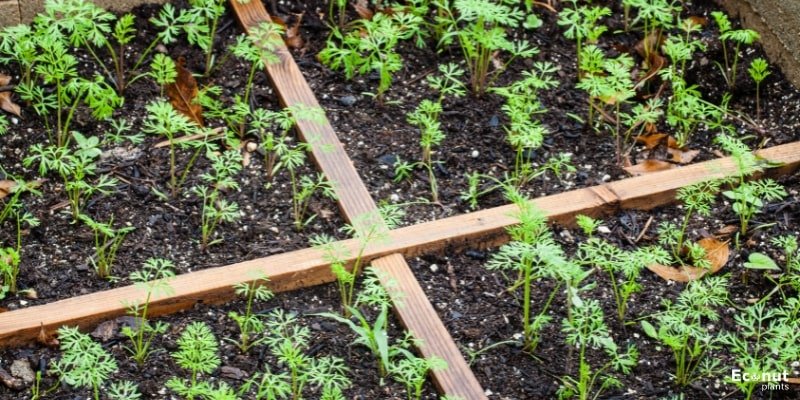
Materials: Pressure-treated wood
Dimensions: 4’ x 4’ x 3’
Difficulty: Easy
This little elevated garden bed might be the answer if your pets are constantly causing trouble in the garden or if you find it difficult to reach over to weed and water the plants. However, the arrangement makes it possible for water retention to be an issue.
Therefore, as the author did, you might want to try adding a sprinkler or a homemade drip watering system to your raised garden beds.
4. Stylish and Decorative Raised Bed
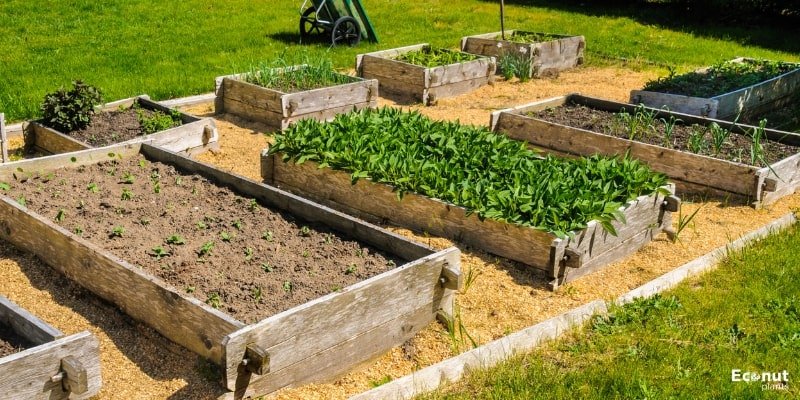
Materials: Wood
Dimensions: 4’4” x 4’4” x 12.5”
Difficulty: Medium
They say, “Simplicity is beauty.” However, there’s nothing wrong with giving your work a little bit of complexity! Diamond patterns are an optional addition to this beautiful planter that can help give your room more colour and diversity.
But be aware that, compared to your simple garden bed idea, this DIY project is a little more complicated and calls for extra tools.
5. Hoop House Raised Bed
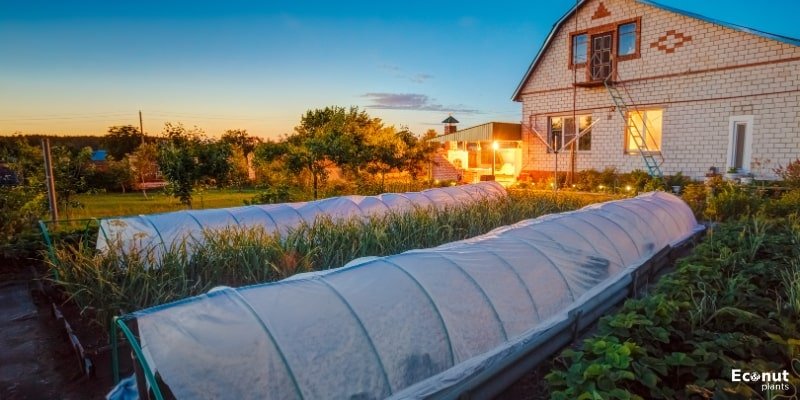
Materials: Wood, PVC, wire mesh
Dimensions: 4’ x 6’ x 1’ box
Difficulty: Medium
It might be summer, according to the calendar. Still, as author Stephanie Strickland discovered, seasons can be confusing in different places. Her garden has summers full of strong winds and frigid temperatures instead of sunny, balmy days.
This raised bed hoop house garden is her homemade remedy. You may work in your garden without interruptions because the detachable cover protects the plants from the weather.
6. Simple and Functional Raised Garden Bed
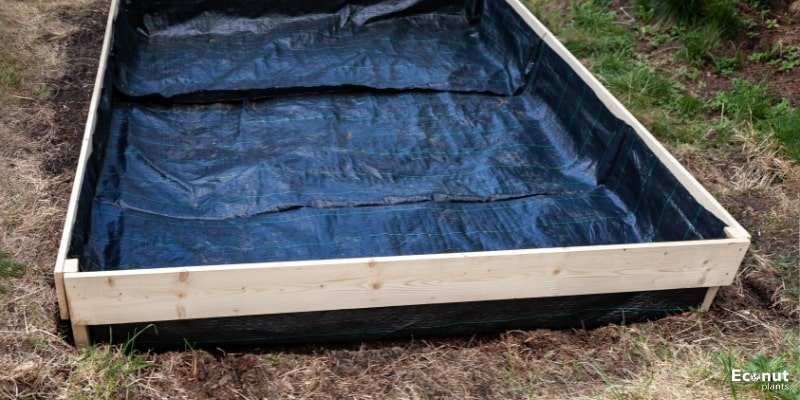
Materials: Wood, weed blocking material
Dimensions: 4’ x 8’ x 1’
Difficulty: Easy
The inexpensive raised garden bed idea from Wood Logger is a great project for homeowners and gardeners who have a lot of underutilized space in their yards.
These raised beds, which are eight feet long, can accommodate a wide range of plants and shield them from weeds and pests. Note that clicking this link will take you to an instructional video in its entirety!
7. Simple, No-Frills Garden Bed
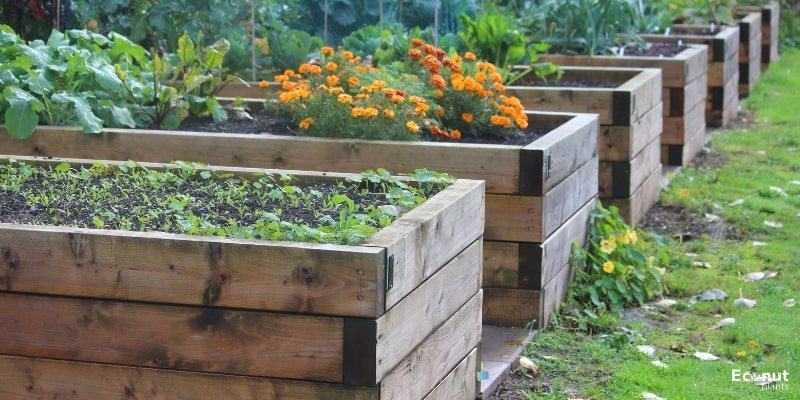
Materials: Wood
Dimensions: 5’2” x 5’2” x 8”
Difficulty: Medium
Stan Sullivan needed a large backyard in 2014—just what he had. It goes well with his passion for gardening. His new home has an enormous backyard.
Finally, one of the do-it-yourself garden bed designs that Stan and his spouse used to revamp their yard is revealed!
8. Interlocked Adjustable Wood Planter
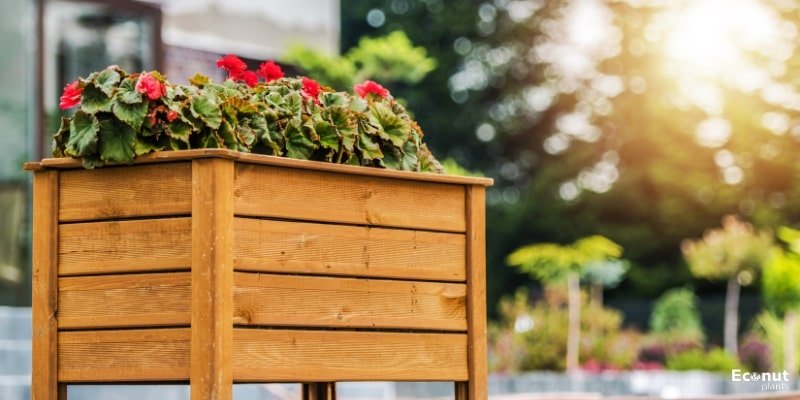
Materials: Wood, requires specialized tools
Dimensions: 5’7” x 3’7” x 15”
Difficulty: Hard
The designer of this design, Rayan, is not a fan of the all-too-prevalent prefab planter kits found in stores. Neither their height nor size may be changed to suit your demands. She therefore designed this planter, which you may alter to suit your interior.
Please take note that this instruction is rather sophisticated, and the author is an experienced maker. However, don’t be intimidated by that. You’ll have this constructed in no time if you follow her instructions!
9. Cap-Railing Raised Garden Beds
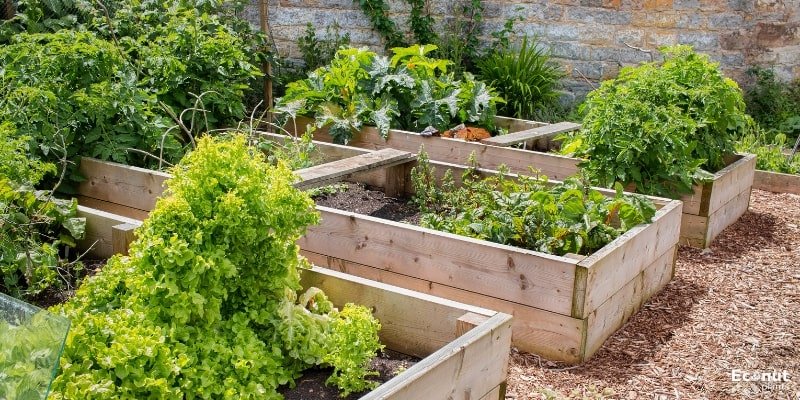
Materials: Wood
Dimensions: 6’ x 3’ x 2’
Difficulty: Easy-Medium
This garden bed design is large enough to accommodate sprawling plants like tomatoes, yet it is also manageable in size so that you can access the center from either side. It measures 3 feet wide by 6 feet long.
In addition to giving the garden bed a more polished appearance and providing a surface for you to relax and set your equipment, the cap railings provide a touch of sophistication.
10. Dog-Proof Raised Planter
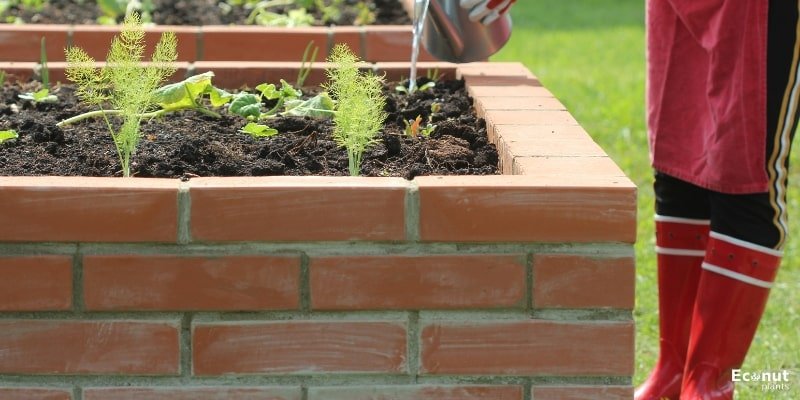
Materials: Wood, sheet steel
Dimensions: 6.25’ x 2’ x 3’
Difficulty: Easy-medium
This do-it-yourself project can be ideal for you if you only have a small balcony in your apartment or have limited yard space. This elevated planter is made of heavy-duty wood for the structure, drainage holes drilled around the base, and scrap steel from a roof used as the lining.
Its 2-foot planting depth allows you to grow anything from cucumbers to carrots. It’s sturdy and surprisingly roomy. It’s dog-proof and, most of all, tall. Paws are not rummaging among the foliage here!
11. Ultimate Raised Bed Garden

Materials: Wood, PVC, rebar, floating row cover
Dimensions: 8’ x 4’ x 1’
Difficulty: Medium
It’s been stated that you shouldn’t judge a book by its cover. It may seem simple at first glance to have this raised bed. On closer inspection, though, you can see that this one is far from “meh.”
Make the best garden bed ever by following Johanna Silver’s detailed instructions. Frost and birds will not be able to damage it, and bugs that dig into it will not harm it. And it waters your crops, too. The ultimate, certainly!
12. DIY Enclosed Raised Bed Garden
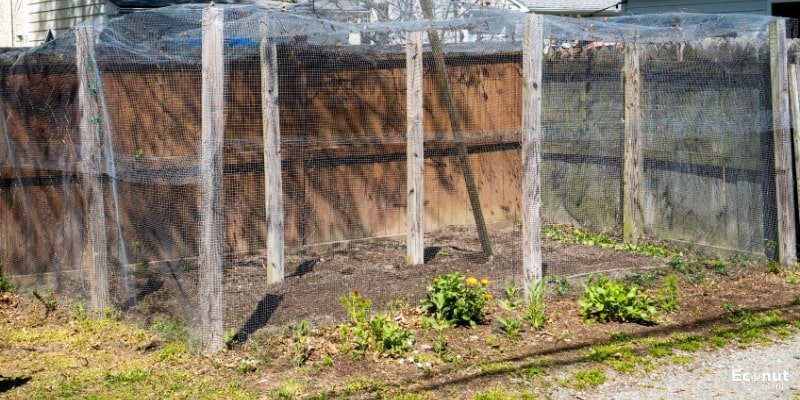
Materials: Wood, plastic mesh
Dimensions: 8’ x 8’ x 5.75’
Difficulty: Medium-Hard
Gardening isn’t all that Becky does. Her DIY project demonstrates her cozy homemaking style. Not only did she construct a space for the cultivation of lettuce, onions, and peas, she constructed a garden enclosure for these plants.
As you work in your garden, you can walk about freely inside thanks to the thick plastic mesh walls that keep pests and playful dogs out of your yard.
13. Large U-Shaped Raised Bed
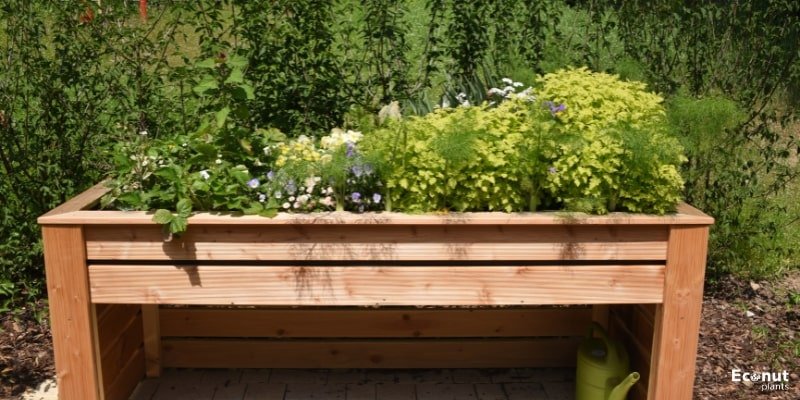
Materials: Wood
Dimensions: 16’ x 9’ x 2’
Difficulty: Medium-Hard
Make sure you have adequate room in your home before beginning this raised bed garden because it is quite large. In addition, you’ll need a tonne of soil to fill your raised bed and at least $500. This garden bed is great for people who are serious about growing their food, yet it might not be suitable for everyone.
For maximum value, you can choose cedar, which is a tried-and-true wood, rather than untreated pine as used in the original build.
14. Tire Raised Bed
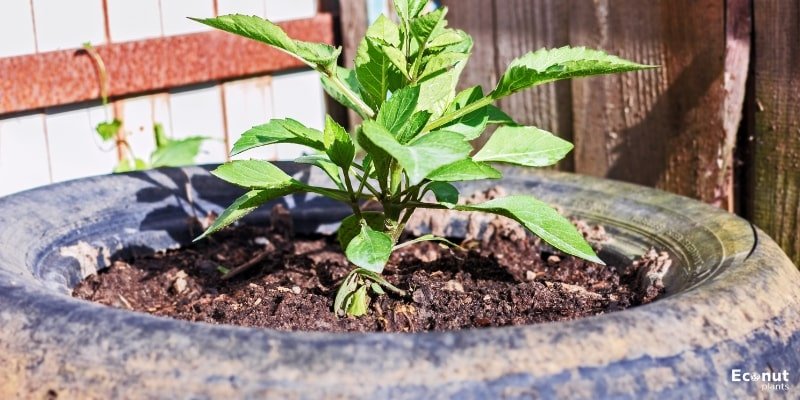
Materials: Old tires, cutting tools
Dimensions: Generally 2-3’ round
Difficulty: Medium
Do any old tires lie around? Have a look at these Instructables instructions if you don’t know what to do with them. To put those pieces of rubbish to good use, they can be just what you need.
Remember, though, that this project will take a lot of sawing and that power equipment will be needed. So make sure you thoroughly read the directions, paying particular attention to the safety advice!
15. Upcycled Pallet Planter
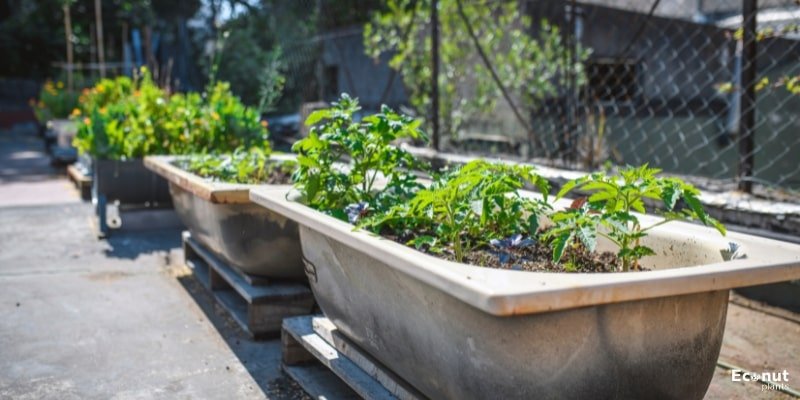
Materials: Old pallet wood
Dimensions: Variable (depends on pallet size)
Difficulty: Easy
Wooden pallets make excellent planters for several reasons. They are easy to take apart and reassemble. They are everywhere, fairly priced if you must buy them, and if you’re lucky, you could even be able to get them for free! A three-minute video that demonstrates how to make this wooden raised bed pallet planter is included in the post.
16. Inspired Natural Wood Raised Bed
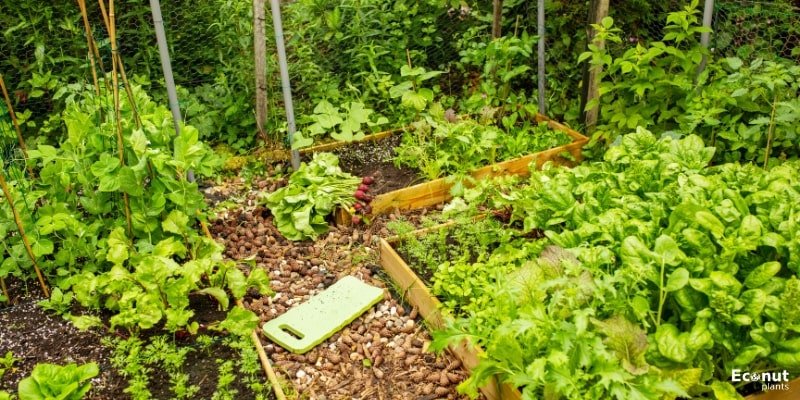
Materials: Scrap lumber, old branches
Dimensions: Variable depending on what you need
Difficulty: Medium
All the guides in this compilation, except this one, make use of materials that you can get at a hardware shop! Repurposing has reached a whole new level with this instructable. Smaller branches, heavier logs, and some straight wood are all readily available for use.
You now have to carefully weigh a few design considerations before you start working. But it will be worthwhile in the end since you will have an elevated garden bed that is as natural as possible.
17. Repurposed Bed Support Raised Bed
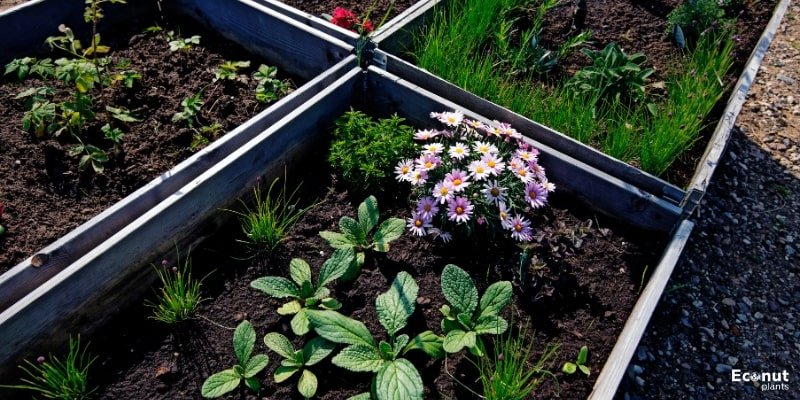
Materials: Repurposed bed support
Dimensions: Variable – depends on the bed
Difficulty: Easy
If you put your imagination to use, you can make almost anything around you into something new. For instance, the creator of this wooden raised bed garden used the base support of the bed to create a stage for her children to play on.
When the kids outgrew the stage, she converted it back into an elevated garden bed. Better yet, she included a frame in her garden bed design to provide support for climbing vines. It’s ideal with peas, tomatoes, and cucumbers.
18. Concrete Vegetable Garden
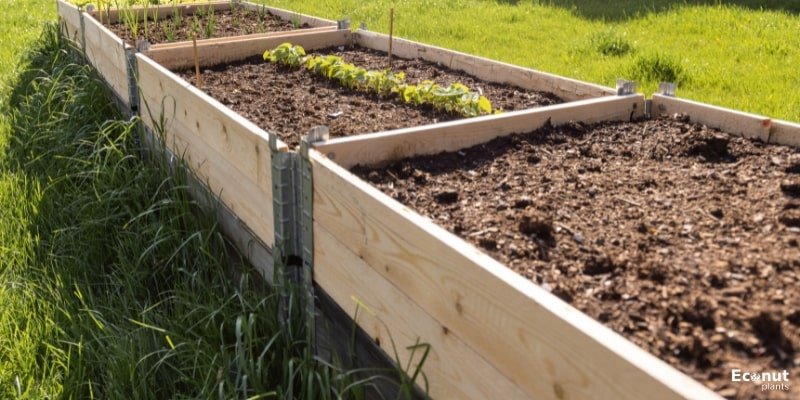
Materials: Concrete blocks and toppers
Dimensions: Variable
Difficulty: Easy
If there’s more concrete than dirt in your backyard, how about creating a vegetable bed that blends in with the existing architecture?
Read these instructions if that sounds like your backyard. This bed may be made to whatever size or shape you like. Its exterior is composed of simple concrete blocks with finishing blocks on top.
19. Willow Wattle Garden Edging For Raised Beds
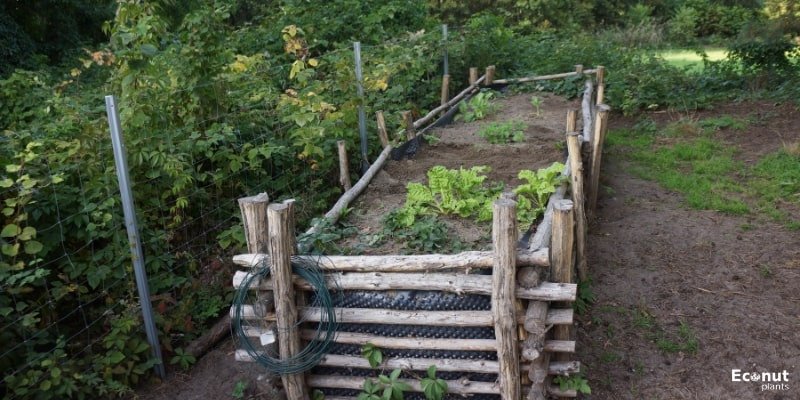
Materials: Willow branches or other flexible greenwood
Dimensions: Variable – depends on need
Difficulty: Easy-Medium
The wattle type of woven stick fencing was prevalent in ancient Rome. This traditional fencing technique has a lot of advantages.
Stakes are wrapped with flexible wooden branches to provide a sturdy, natural border that is simple to fill and shape to create an elevated bed. With the help of these 12 steps, you can implement this antiquated fencing technique in your contemporary garden.
20. Milk Crate ‘Air-Pot’ Garden
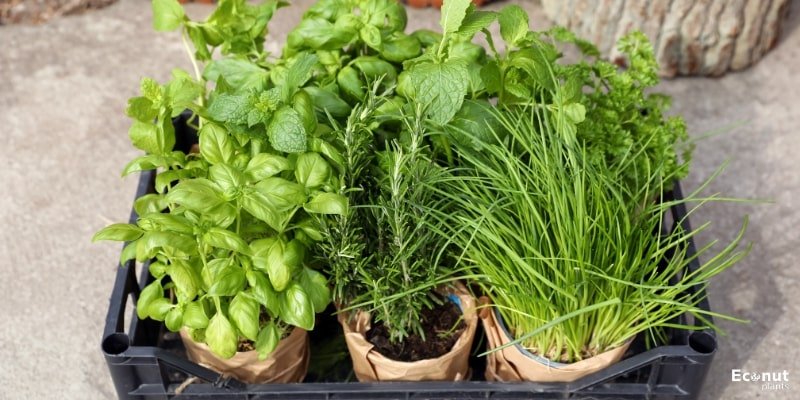
Materials: Milk crates, landscaping fabric
Dimensions: Variable depending on the number of crates
Difficulty: Easy
Gardening can be a lot of fun and flexible with milk crates. There is nothing to build to use these planters! All you’ll need are milk crates, which are usually easy to obtain, dirt, seedlings, landscape fabric, and scissors. You won’t have any more justifications for not establishing a garden after reading this article.
21. Reclaimed Wood Raised Beds

Materials: Reclaimed wood
Dimensions: Variable depending on wood availability
Difficulty: Easy
Wonderful reclaimed wood! The majority still retain their original paint colour or wonderful patina from age. Plus, it’s simple to locate practically wherever. Looking at your home and neighborhood can be a good place to start. A wonderful place to find free reclaimed wood is in structures, especially barns and old fences.
However, be aware that you will need to prepare worn-out timber for repurposing if you wish to build this wooden raised bed idea. You shouldn’t worry about anything, though! That’s all covered in this handbook.
22. Repurposed Dresser Herb Garden
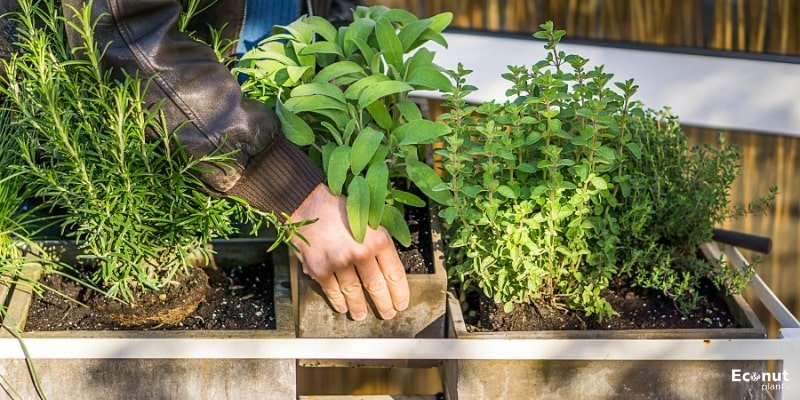
Materials: Old dresser
Dimensions: Depends on size of dresser used
Difficulty: Easy
Reusing rocks! Giving outdated items a fresh lease on life not only saves you money but also has a calming, fulfilling effect. This guide will tell you how to prepare and transform an old dresser into a new spring garden if you have one that you no longer use. And what do you know?
You won’t even need to make any cuts or disassemble the furniture. You can leave the dresser unfinished for an antique look after adding soil and plants to it. Alternatively, paint this raised herb garden to make it seem better.
23. U-Shaped Raised Bed
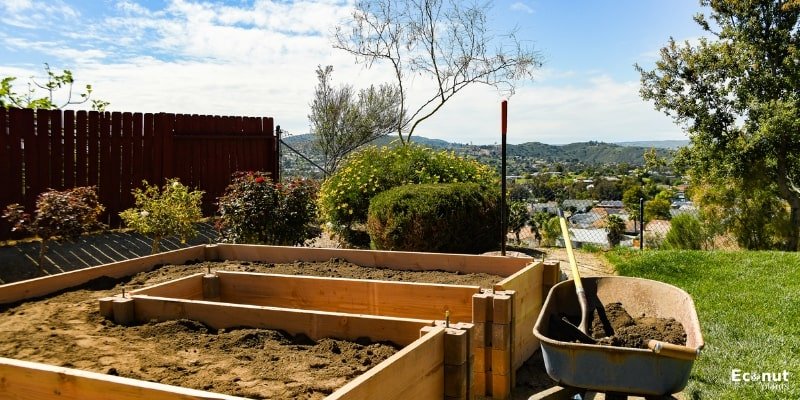
Materials: Wood
Dimensions: Not specified, variable
Difficulty: Easy
There are several benefits that a square raised bed garden may provide. However, if creating one for your garden isn’t practical, you could need something like this concept for a raised bed with a hook.
It is straightforward to follow, and locating the required equipment and supplies is not difficult. There are also links to a cold frame construction guide in the post.
Cold frames work well in this garden bed to help you get an early start or extend the outdoor growing season by a few weeks.
24. Interlocking Corner Raised Bed
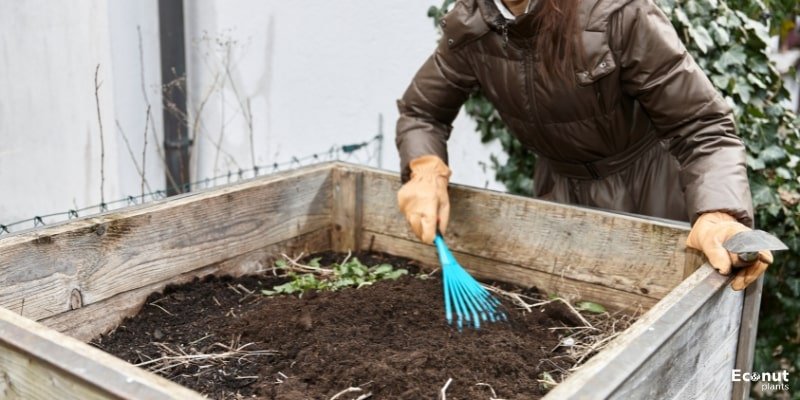
Materials: Wood
Dimensions: 10’ x 5’ x 16”
Difficulty: Medium
When the HH constructed Mavis Butterfield with a few roomy raised garden beds, she stopped being so attached to the ground (and fence). This is a really deep DIY design, so it’s appropriate for crops right now. Of course, you could always build more timber stacks if you wanted additional depth.
This project might benefit from using cedar. Douglas fir, however, can be almost as good, which is what the author and her partner chose. Even better, it typically costs half as much as fence-grade cedar. Perfect for this do-it-yourself project!
25. Fence Line Planter Box

Materials: Wood
Dimensions: 8’ x 2’ x 1’
Difficulty: Easy
Alex and Carla adore taking vacations. Not so they can stay up late and binge-watch Netflix, but rather so they can make wonderful things like this planter box. The couple’s first attempt at planting a vegetable garden is a DIY project, and it’s off to a great start!
Cedar-tone pressure-treated lumber, which is far more affordable than regular cedar, was used to construct their elevated planter box. It is not difficult to build the boxes, and it shouldn’t take up too much of your time.
26. Cedar Raised Boxes
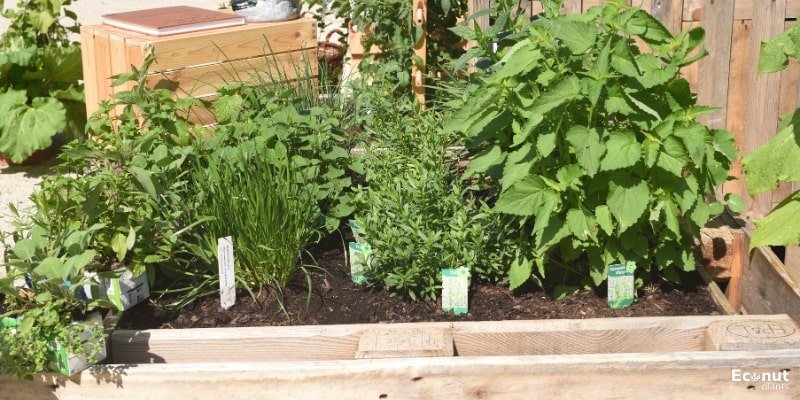
Materials: Wood
Dimensions: 6’ x 3’ x 15” or 4’ x 4’ x 15”
Difficulty: Easy
Raised beds require a lot of space to build and can take up much of your backyard. A square bed is great, but to free up the center for your grass, you might need a mix of square and rectangle beds that you can tuck around the corners.
This easy DIY instruction is just what you need if this describes your circumstances. You can begin building after reading the post, gathering the necessary supplies, and grabbing a few cedar boards that won’t decay.
27. Corrugated Aluminum Raised Bed
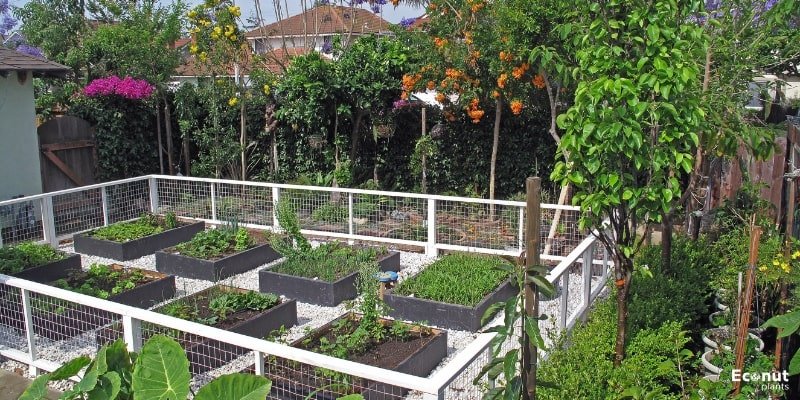
Materials: Corrugated aluminum, wood
Dimensions: 4’ x 8’ x 2’3”
Difficulty: Medium
What, therefore, makes this instruction unique? To begin with, this does not employ the customary materials. Second, you’ll have a work of art in your garden if you adhere to the instructions to the “T.” Corrugated metal and pressure-treated wood are used in this garden bed.
28. Cinder Block Raised Bed
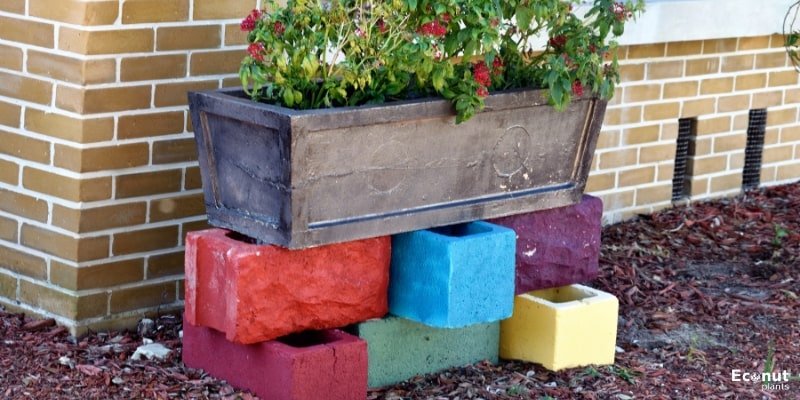
Materials: Cinder blocks
Dimensions: 4’8” x 4’8” x 8”
Difficulty: Easy
Some people are not comfortable handling saws and wooden planks. Perhaps you fall into this group of gardeners. However, you are capable of moving objects and positioning them, right?
This one cuts out the need for measuring, cutting, and power tool work by using cinder blocks in place of wood. To start growing your favourite vegetables, just choose the ideal location, level the ground, and add the blocks!
29. Square Foot Grid Garden Bed
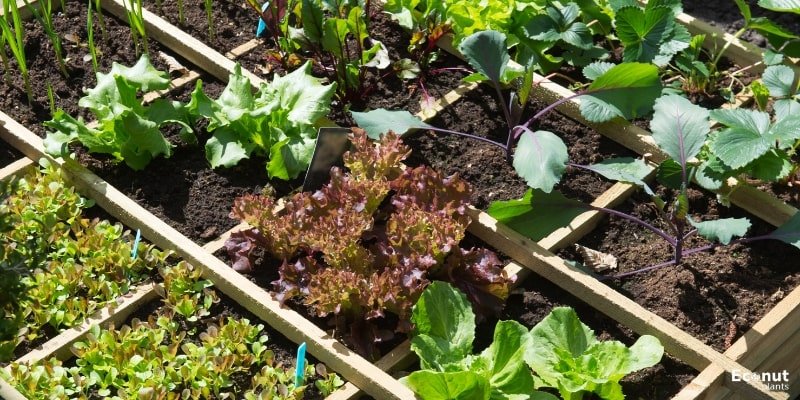
Materials: Wood, weed-blocking material
Dimensions: 4’ x 4’ x 6”
Difficulty: Easy
The square-foot gardening method is applied in this raised garden bed design. The concept is straightforward. Cut a square form out of wood, cut square-foot squares, arrange them in a row, and get planting!
This method works well for creating a tiny but densely planted garden. Everything you need to know to get started is covered in this tutorial, from selecting the site to preparing the soil to applying the final touches.
30. Raised Garden Container
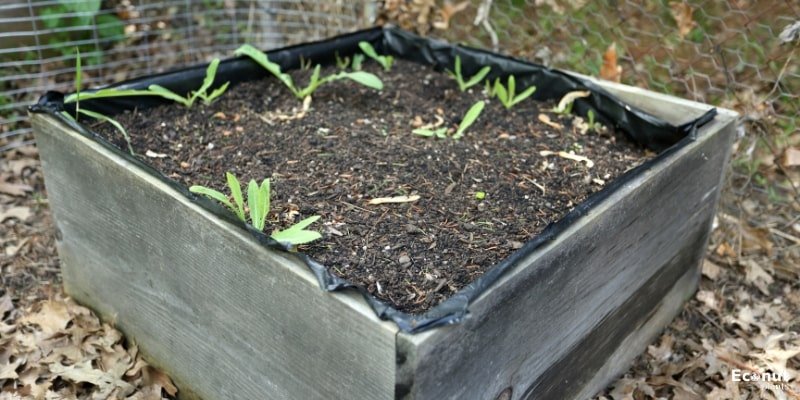
Materials: Wood
Dimensions: 4’ x 3’4” x 3’
Difficulty: Medium
One day, while shopping, Maureen Fitzgerald, a mother from Wisconsin, came across a beautiful raised garden bed made of VegTrug. Nevertheless, given its size, the bed was too costly. Jay, her spouse, decided to construct a larger one for her at a more affordable cost.
The materials needed to build this elevated garden bed are readily available at your neighborhood hardware store, and the construction of this do-it-yourself project is really simple.
31. Elevated Wood Garden Bed
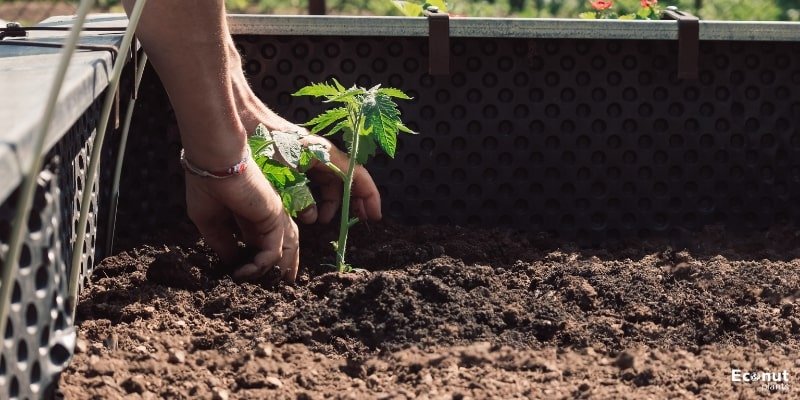
Materials: Wood
Dimensions: 4’4” x 3’4” x 3’
Difficulty: Medium
This elevated raised garden bed concept is perfect if you don’t have enough room for an in-ground garden, such as in an apartment or condo. The authors had no intention of creating a work of art.
However, when fresh, organic veggies begin to sprout out of it, this garden bed looks great on any patio or deck. If you need extra space for your veggies, just create more beds—each one takes up one square foot.
32. Raised Bed with Built-In Benches
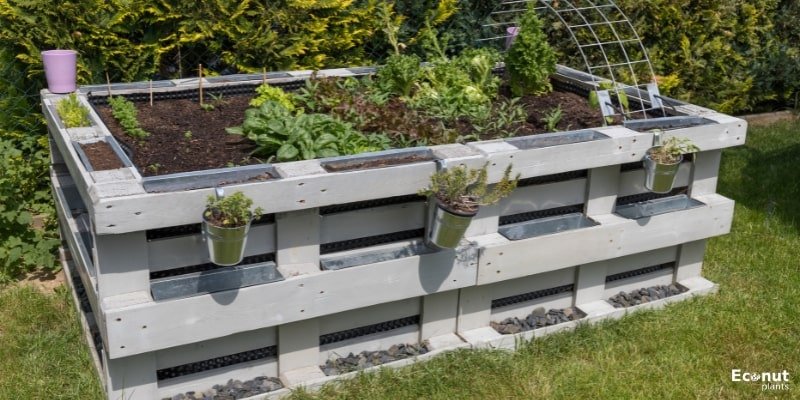
Materials: Wood
Dimensions: 3’8” x 4’ x 18.25”
Difficulty: Hard
This is a great raised garden bed idea. It has benches where you can sit while harvesting, watering, or planting in your garden, and it’s higher than typical raised beds. If you have some woodworking skills, the project will only take you half a day.
Anyone searching for a chic and eye-catching addition to their yard, especially older gardeners, may find this raised bed concept to be the ideal present.
33. Vertical Garden Pyramid

Materials: Wood
Dimensions: 3’ x 3’ x 6’
Difficulty: Medium-Hard
It’s not surprising that vertical gardening is becoming more and more common. Maintaining this technique is simpler. Harvesting produces a healthy harvest and is hassle-free. Consider this garden pyramid design if you’d like to try your hand at vertical gardening.
When cutting, just keep the compound angles in mind. You will need some carpentry experience for this, so practice with some scrap wood first to avoid wasting your pyramid supplies.
34. 2×2 Raised Planters
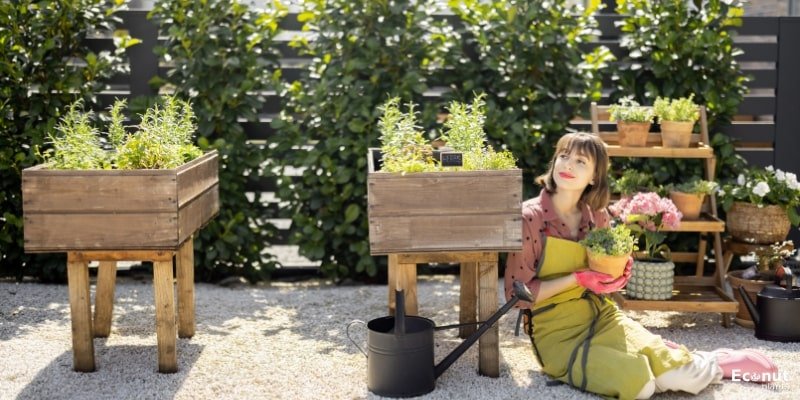
Materials: Wood
Dimensions: 2’7” x 2’7” x 17”
Difficulty: Medium-Hard
Even in the smallest backyards, this 2-by-2 raised garden bed is perfect for flowers and herbs. A drill driver, miter saw, table saw, and Kreg Jig may be needed to build this planter, but if you’re handy, you can probably get by without many tools.
Comparing the design to other garden beds, it is slightly more complex. Thus, if you’re a novice, be ready for a little learning curve.
35. Multi-Level Garden Bed
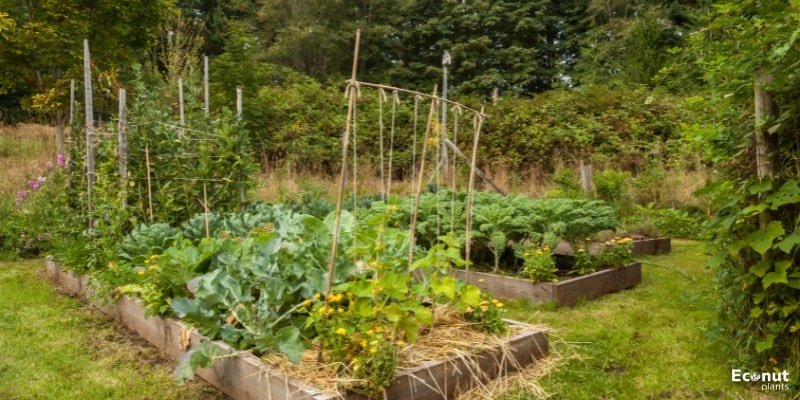
Materials: Wood
Dimensions: Varies, but sample is 3’ x 2’ x 4’
Difficulty: Easy-medium
Do you appreciate growing veggies that are in season later on, like cauliflower, broccoli, and beets? I imagine you’re thinking about how to make them last through the summer. Check out this multi-level garden planter if that’s the case.
The height of the planter shields it from stray animals and offers shelter to cool-season plants, letting summer plants on the upper level enjoy the sun.
36. The Herb Wheel Planter

Materials: Wood
Dimensions: 2’8” x 2’5” x 1’
Difficulty: Hard
The planting area of this 32-inch-wide wheel garden planter is significantly smaller than that of a standard square garden bed.
It can, however, be an attractive (and reasonably priced) addition to your backyard because it appears to be everything conventional. However, fear not! Simple instructions and pictures are included with this raised garden bed guide.
37. Reused Masonry Raised Garden
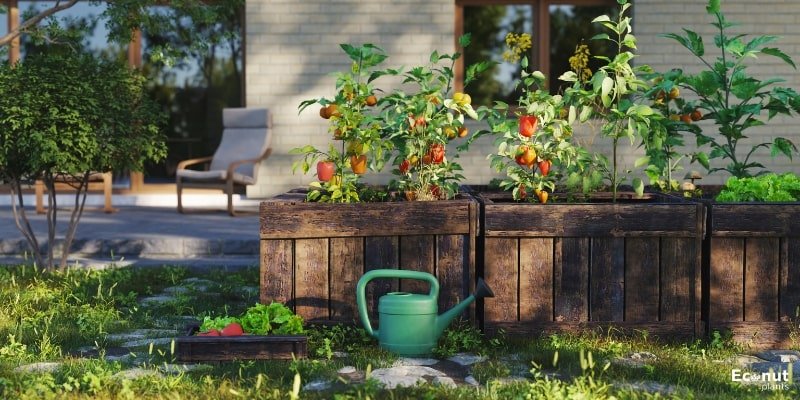
Materials: Chimney tiles, cinder blocks
Dimensions: 3’4” x 3’4” x 8-12”
Difficulty: Easy
You seem to have a lot of leftover masonry and blocks. The easiest course of action would be to contact a grab hire firm to have your rubbish collected, but hold off on doing so just yet! Check out this garden bed concept instead.
You can begin building as soon as you get a 4′ board, rake, and shovel. It’s important to keep in mind, though, how much space you have available and the herbs you wish to grow. Different herbs grow well in different areas, and some are very invasive.
38. 4×4 Raised Beds
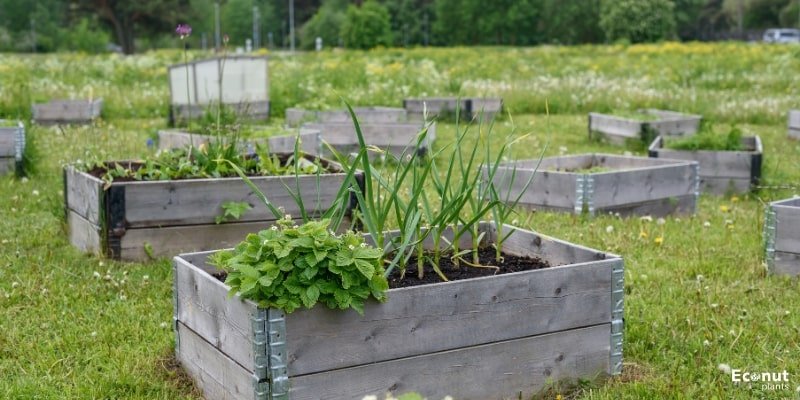
Materials: Wood
Dimensions: 4’ x 4’ x 16”
Difficulty: Medium-Hard
This lovely raised bed has plenty of space at the bottom to allow the roots of your vegetables to spread out and improve their hold on the soil. To improve the design’s aesthetic appeal, the slats have a small curvature.
This elevated bed can withstand bumps from children, pets, and other objects while maintaining its soil. For more colour in your yard, you may also paint the stiles a different colour.
39. DIY Basic Raised Beds
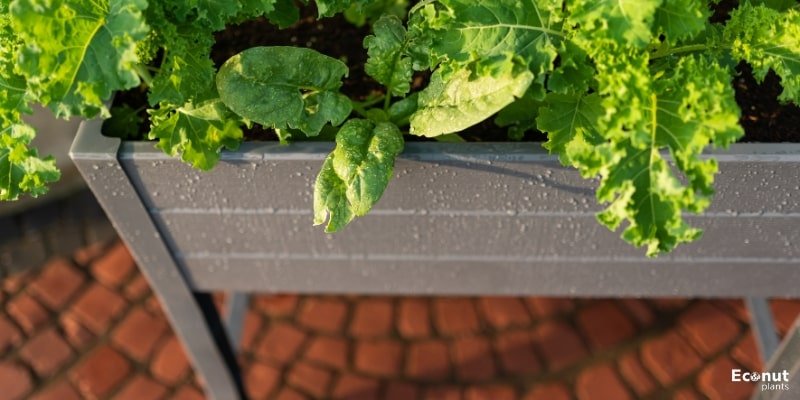
Materials: Wood
Dimensions: 4’ x 8’ x 1’
Difficulty: Easy
Garden beds had long been Heather Clarke’s ambition. She was, however, scared by the thought of building and going broke in the process.
Till she discovered that inexpensive garden beds are not necessary, that is. Heather spent only $35 on this raised bed concept. Moreover, it is easy enough for beginners. She performed admirably, despite not being an expert.
40. The Self-Watering Salad Table
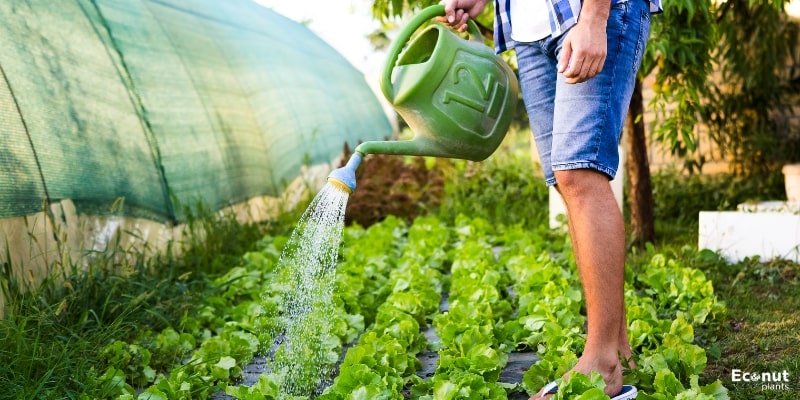
Materials: Wood, plastic bins, PVC
Dimensions: 5’3” x 2’3” x 3’
Difficulty: Medium
It’s a dream of yours to grow your food and enjoy gardening. Maybe, though, you’re not into making a mess while tilling and pulling sod? Try making this DIY salad table if that’s the case.
This elevated garden bed elevates your greens and shields them from ground-based pests, all the while the integrated self-watering system wicks water from the container down to the roots. It demands more work upfront. Once you finish it, though, it’s set and forgotten.
41. Cedar DIY Raised Garden Beds
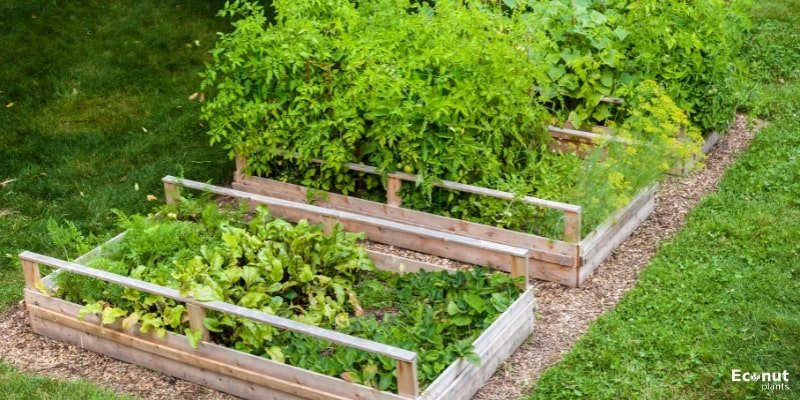
Materials: Cedar fence boards
Dimensions: 6’2” x 1’7” x 1’
Difficulty: Easy
When it comes to woodworking projects, cedar is a great material. In addition to being reasonably priced, it is resistant to weather, rot, and insects without the need for pesticides. Using fence pickets from a big-box retailer, Ana White demonstrates in this tutorial how to build a cedar garden bed.
42. Landscaping Timber Raised Garden Beds
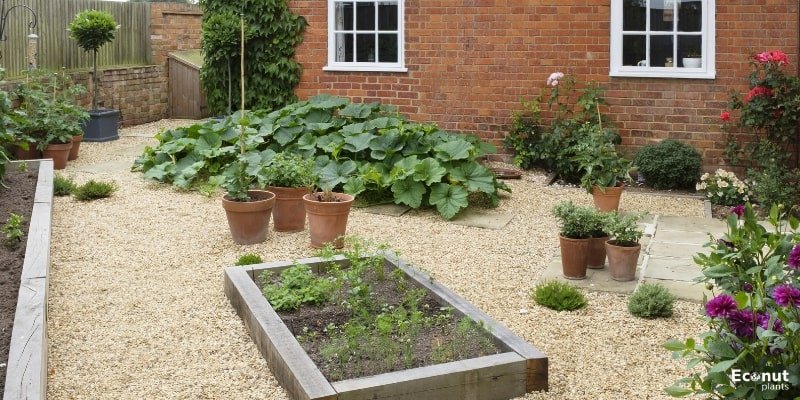
Materials: Landscaping timbers, stakes, rebar
Dimensions: 8’ x 4’ x 12”
Difficulty: Medium
When constructing raised beds, basic wooden planks and fence pickets are the preferred materials. However, one builder chose to use timber for landscaping.
If you have the room and wish to give your garden a decorative touch, you should put these elegant 8-foot-long garden beds on your list of projects to complete. Some time-tested advice on growing your new garden is included in the guide.
43. Railway Sleeper Raised Beds With Benches
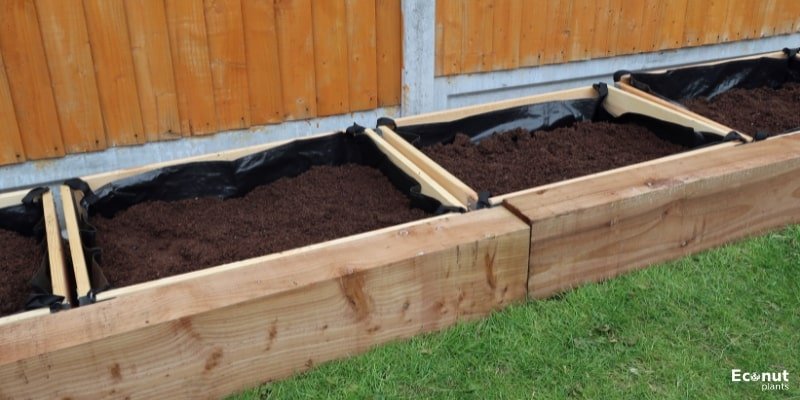
Materials: Railway sleepers, wood
Dimensions: 21’ x 8’ x 3’
Difficulty: Hard
Even when a wooden railway sleeper is retired from service, it still has many uses. The only restriction on the uses of these sturdy wood pieces is one’s creativity.
With this design, raised beds with seats can be made out of railway sleepers! This project is perfect for creating both a spot to rest and a home for your veggies in the yard!
44. Raised Bed Keyhole Garden
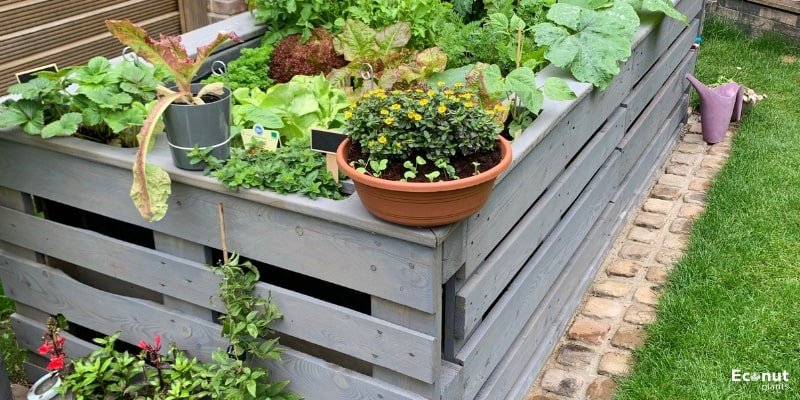
Materials: Stake, string, retaining wall material, drainage material, 4’x 2.5’ small wire mesh, mulching materials, topsoil
Dimensions: Variable depending on what you need
Difficulty: Medium
The keyhole garden has a long history of giving gardeners in dry, desert areas a workable soil in which to cultivate a wide variety of foods.
These blueprints provide you with inspiration and knowledge about keyhole gardening, explaining not only how to construct one but also how conventional keyhole gardens operate. Both the ideas and the supplies you already have will adjust to your circumstances!
45. DIY Raised Bed and Row Cover
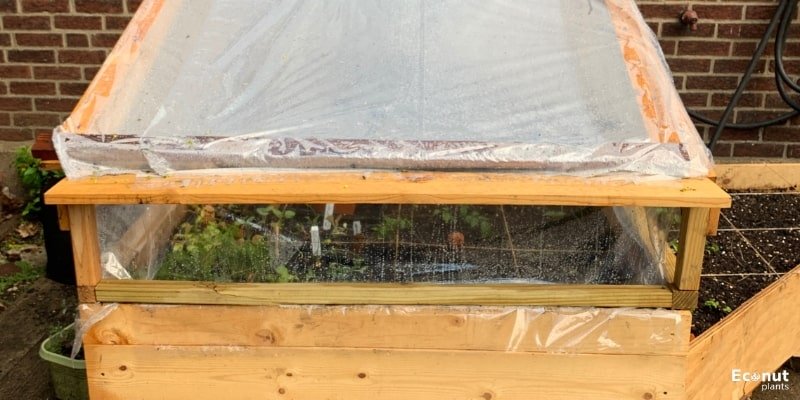
Materials: Wood, hinges, handles nylon straps, corner braces, poly pipes and insert plugs, floating row covers, and window screen molding
Dimensions: 3’ x 8’ x 1’
Difficulty: Hard
This bed opens on a horizontal axis instead of a vertical one, just like the raised bed in the hoop house shown above. This type of cover opens in this fashion; therefore, it’s ideal for people who live in windy areas or have more horizontal space.
This plan is also a bit more complicated, so it’s best suited for experienced do-it-yourselfers. All in all, these plans offer you a great deal of coverage and the capacity to shield your plants from harsh winter weather.
Conclusion
Ready to give these incredible raised garden bed ideas a try? If so, this is your opportunity to get going! It’s best not to start now if you live somewhere that gets hot during the summer. You’ll need to do some research.
The first thing to do is choose the crop you wish to sow. Once you’ve made your decision, look out for information on the best ways to cultivate it and the required temperatures. A fantastic finished product is ensured by all of these features!

